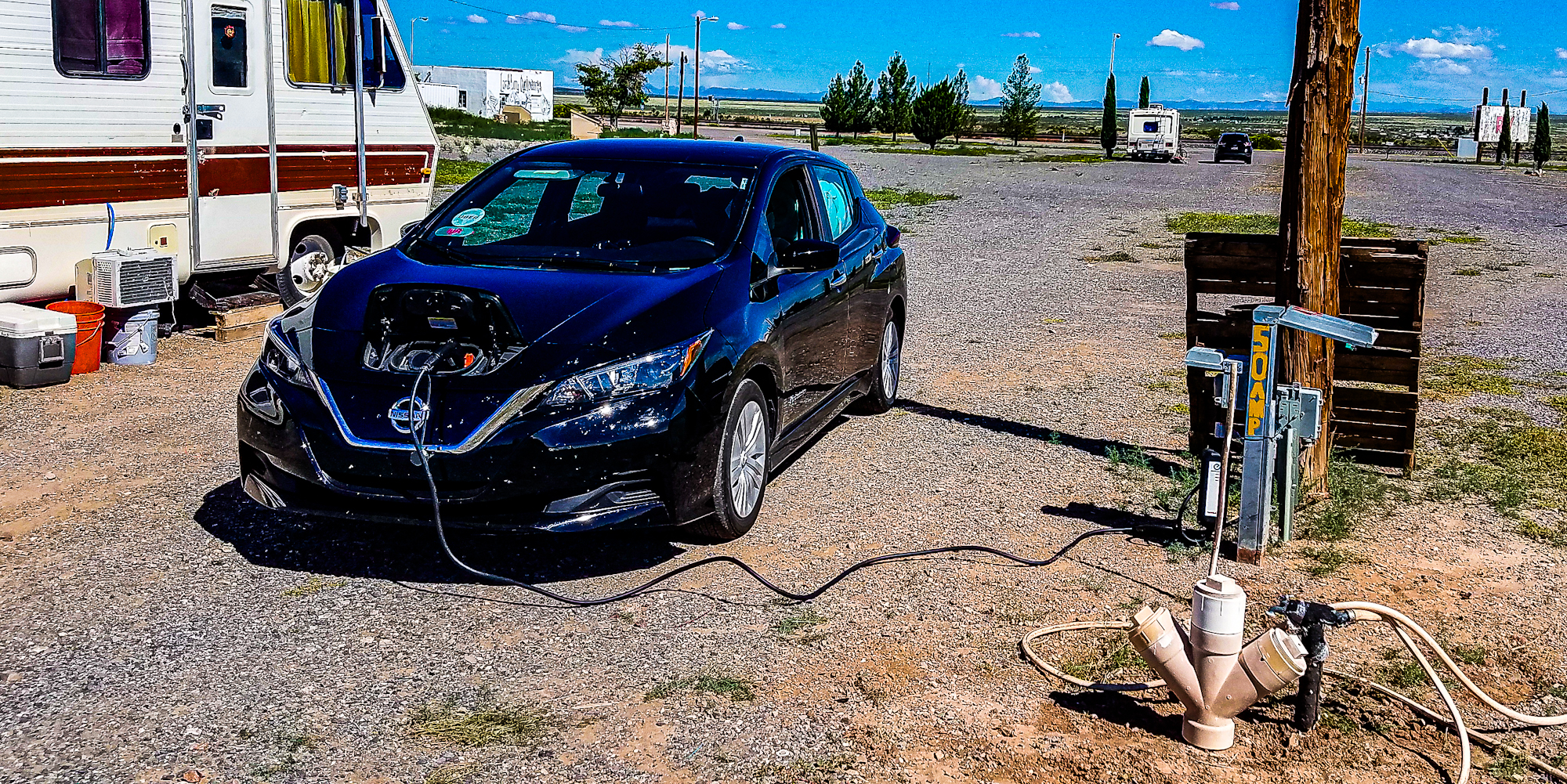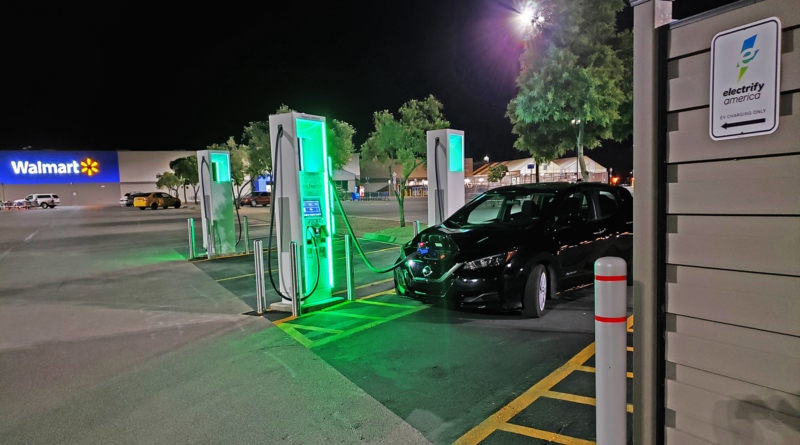While going through some old photos, I stumbled upon the one featured at the top of this article. It was from the opening of Electrify America’s station in El Paso back in 2019. This milestone marked the first non-Tesla EV charging station in the region. When I purchased the Nissan LEAF over a year prior, I was living in Phoenix where EV charging stations were abundant, even for a CHAdeMO car. However, due to family reasons, I had to relocate to southern New Mexico, an area lacking in charging infrastructure. For almost a year, my only option was Level 2 charging.
This event was significant for the LEAF and its functionality, and the progress has only continued since then.
For those in the “You should have bought a Tesla” camp, it’s important to note that I purchased the LEAF in early 2018 when an affordable Model 3 wasn’t available (production challenges had just begun), and other EVs were out of my budget. In 2018, there were still significant gaps in the charging network, even for Tesla, despite a Supercharger being present in El Paso for a couple of years. The completion of the “golden spike” for I-10 in the Supercharger network only occurred towards the end of that year with the opening of the Fort Stockton Supercharger.
Even individuals with more financial resources experienced the challenges of inadequate charging infrastructure, especially 2–3 years before that.
Many EV owners who made purchases in the last 2–3 years haven’t experienced the world without solid charging infrastructure. Hence, I wanted to share some anecdotes from owning an EV in a time when there was limited charging support so that we can all appreciate how far we’ve come in recent years, regardless of the EV we own. We have a lot to be grateful for, and it’s easy to overlook.
Driving for Uber & Lyft Without DC Fast Charging
Upon moving back to southern New Mexico, the ride-hailing business was almost non-existent. To earn some income and sustain myself until other business opportunities emerged, I had to drive to El Paso, approximately 40 miles away. I always began with a full battery from my apartment, where the property manager allowed me to use a dryer plug for charging. However, the 40-mile initial drive depleted a significant portion of the LEAF’s battery, which had a range of about 110 miles at 65 MPH on highways.
My routine involved driving to Whole Foods Market and connecting to a Level 2 ChargePoint charger while waiting for my first ride. This was an opportunity to use the restroom, grab a snack, and take a short break. Often, it was a customer at Whole Foods needing a ride, so they definitely got their money’s worth from the electricity I used. Unfortunately, the station was later closed down due to “overuse.” [Editor’s note: Head drops & shakes slowly…]
After picking up a passenger from there or nearby, I would check PlugShare for the closest charger. If it was nearby, I could use a station at a Nissan dealership. There were also hospital chargers, as well as a few temperamental Blink stations near UTEP. If I ventured across town, there was a BMW dealership with a charger, another Nissan dealership that thankfully kept its charger accessible at night, and a shopping center with an underground parking garage, facilities, and eateries.
At times, I would visit that underground parking garage to take a nap while the car charged if the battery level was too low for rides. I often had to stay there for a couple of hours to ensure I had enough range to return home after the bars closed on weekends.
However, if I dropped off passengers in the northeast part of El Paso at night, there were no Level 2 stations in close proximity. While I never got stranded, there were a few close calls that required me to hypermile to the east or west side for charging. Once, while quite far northeast and low on battery, I resorted to driving at 30 MPH on backroads to conserve energy and barely made it home with just 5% charge remaining. From that point on, I opted for slower routes home as charging the battery sufficiently to take the freeway and travel at 80 MPH took longer than hypermiling.
On one occasion of hypermiling, my luck ran out. Despite being at the nearest charger to home at a hospital, I decided to head home with only 20% charge left. While I had previously departed with 22% charge on similar nights and barely made it, I believed I could hypermile more efficiently to reach home. Unfortunately, about a mile from my exit, the LEAF refused to go further. Since it stopped short of a significant hill that I hoped to coast down, I had to call a tow truck for a short ride back to the dryer plug.
Road Trips With Minimal Infrastructure
Embarking on Uber drives with an EV under such circumstances may seem unconventional, but I assure you, I am more daring than that. I had even taken the LEAF on several road trips, including one that spanned almost 1200 miles. While you can find tales of extension cords hanging out hotel room doors, arriving at state parks past 2:00 AM, and hypermiling on roads that challenge even Teslas in 2024 elsewhere, I have chosen to share a story I haven’t previously disclosed.

During one trip, I aimed to reach Tucson from Lordsburg, New Mexico. After a brief stop for lunch at a questionable RV park, contemplating potential threats from local meth users eyeing my car for copper, I decided to depart before recharging fully as I had initially intended. Between Lordsburg and Willcox, I debated stopping at another RV park but believed I had enough charge to coast downhill to Tucson and continued on. However, witnessing the significant charge depletion on the hill post-Willcox shook my confidence, leading me to seek a recharge at “The Thing” gas station.
Upon arrival, I noticed RV pedestals nearby and connected to one before confirming permission inside. The cashier approved my use of the charger, and we grabbed a meal. However, upon returning to my car, I realized my EVSE (charging cable) was missing. It turned out the manager had taken it because he harbored a dislike for EVs and assumed I was stealing electricity. The cashier, intimidated by him, failed to mention my prior consent, resulting in me receiving the cord back with a warning from the manager.
Subsequently, I contacted the local sheriff’s department, who cautioned the establishment against confiscating people’s charging equipment. They also advised me to seek permission before plugging in rather than afterwards since technically, using a penny’s worth of electricity without explicit consent constituted theft. I haven’t returned to that gas station since. I later discovered that the manager had damaged the cord, although I didn’t pursue further action.
Improvements and Ongoing Progress
Today, the route boasts Electrify America stations at Lordsburg and Benson, alleviating the need for charging at RV parks or dealing with hostile individuals suspicious of EV drivers. Currently, almost every interstate route offers ample coverage for EVs of all types. Many Tesla stations will soon be accessible to other drivers, thanks to GM and EVgo’s efforts to install additional stations at truck stops. Furthermore, more stations funded by the Infrastructure Bill are set to open.
Although some individuals may grumble about having to charge their EV multiple times or facing a 30-minute wait for a charging slot, those of us who remember a time without any Level 3 stations see things differently. None of the new wave of EV owners have encountered situations like stalling on the roadside, confrontations with law enforcement over negligible electricity usage, or sneaking a charging cable under a motel room door!
That’s the reality of the next phase of EV ownership. We can’t expect present-day buyers to possess the same level of unwavering patience and resilience as early adopters.
Featured image by Jennifer Sensiba.
Have a tip for CleanTechnica? Want to advertise? Want to suggest a guest for our CleanTech Talk podcast? Contact us here.
Latest CleanTechnica TV Video

CleanTechnica uses affiliate links. See our policy here.

